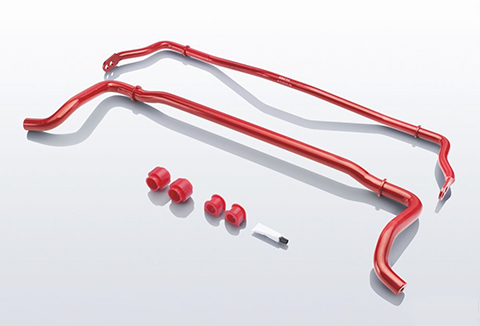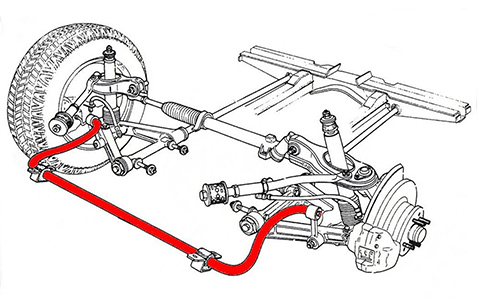If you have a little knowledge of modified cars, you must have heard of the "sweet stick" of anti-roll bars and know a little about its function. Many people say that installing anti-roll bars can reduce the car’s roll when cornering. However, do you know the operating principle of the anti-roll bar? Is the anti-roll bar really thicker the better?

Those who have seen the anti-roll bar should all know that the structure of the anti-roll bar is quite simple. It is mainly a U-shaped cylindrical metal (usually made of iron) link, and the rear axle of the car is connected by a control arm. The side suspensions are connected together, and usually the anti-roll bar is also equipped with two fixing points, which are fixed to the chassis of the car through rubber bushings. As for why you need to install anti-roll bars? This will mention the principle of body tilt. When the car is cornering, the spring-loaded mass of the shock absorber will naturally move toward the outside of the car body, which is the so-called car body tilt.
Tilting of the body will cause the wheels to tilt. In addition to reducing the contact area between the tire and the ground, excessive tilting will also affect the handling response of the car, and it will take longer for the driver to stabilize the car. By installing the anti-roll bar, it will twist when the car is cornering. The elasticity of the shaft becomes the resistance of the tilt, and can play a torsion resistance to reduce the extent of tension and compression on the inner side of the suspension, thereby controlling the car The inclination amplitude achieves the effect of lateral stability. Simply put, the anti-roll bar is able to reduce the car's roll, although it cannot completely avoid the roll.
Sounds perfect right? However, the installation of the tilt bar has side effects: when one of the wheels passes on an uneven road, the other side of the suspension will also be affected by the connection of the anti-roll bar, and in severe cases, the resulting bumps will even be transmitted into The compartment affects the comfort of the car, and the body will become more "tight". Therefore, the anti-roll bar must not be too hard, it is best to find a balance between comfort and handling. This is why an independent suspension system is always a better setting, because while taking into account the control, it will not transmit vibration to each other and affect comfort.

In addition to improving the turning ability, the anti-roll bar can also change the balance of the car. For example, installing a high-stiffness anti-roll bar on the rear wheels of a front-wheel drive car will reduce understeer, while installing it on a rear-wheel drive car will reduce oversteer. It is worth mentioning that a thicker anti-roll bar does not necessarily mean higher hardness, because some anti-roll bars may be hollow.
In addition, the length and position of the anti-roll lever will also affect the stiffness and indirectly affect the balance of the car. More than that, too strong anti-roll resistance may also cause the inner wheel rim to leave the ground when cornering, causing 100% weight transfer, which can be said to be quite dangerous. Therefore, the anti-roll bar is not simply the pursuit of the harder and thicker it is, but the balanced setting is the king!
We are engaged in the production and independent import and export of aluminum alloy wheel in china, with more than 2,0000 models of aluminum alloy wheels, about 100,000 inventories, and fast delivery. We provide custom wheels and generation production services, you can provide us with a wheel style map, our designers will design you a beautiful and high quality wheel, welcome to contact us!
If you don't find the wheel style you need, you can send an email to jihoowheels@jihoosh.com and we will send you the wheel style you need according to your description!We will provide you with quality China wheel and excellent service.

